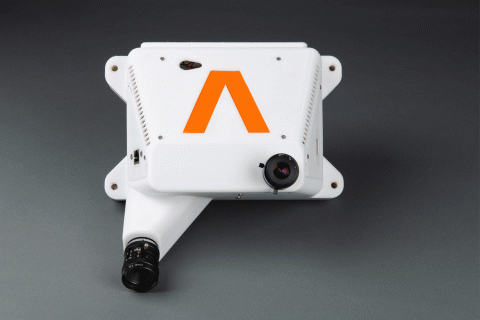Draper Joined NASA Astronauts in the Arizona Desert for a Trial Moonwalk
CAMBRIDGE, MA—NASA astronauts tried out their moon exploration gear recently in the Arizona desert. They put on mockup spacesuit systems to walk about in a simulated moonscape. The outing was intended to bring America one step closer to the day when humans return to the lunar surface, a major goal of NASA’s Artemis III.
One major difference with the next moon mission is its destination: the lunar South Pole. Because of the challenging conditions, such as stark lighting and extreme cold in the shadows of crater walls, astronauts will need new technology so they can explore in safety and return to their spacecraft easily.
That’s where Draper comes in. Since the Apollo era in the 1960s, Draper has worked with NASA on a range of capabilities designed to protect astronauts and guide spacecraft to their destinations.
The stakes are higher for the next moon mission if only because astronauts will be tasked with conducting more science experiments and cover more ground. Astronauts will need technology that gives them navigation and direction-finding support as they go about collecting rock samples and conducting other experiments.
“Navigating in the lighting conditions and terrain of the lunar South Pole will be challenging,” said Brett Streetman, a space systems engineer at Draper who works on NASA’s Artemis mission. “Safety-focused navigation will enable a precise landing and allow the astronauts to explore the terrain safely and return to the lander vehicle with fewer potential complications.”
Navigation can be especially challenging in certain environments, such as those where GPS or radio signals aren’t available. Submarines, for instance, might use acoustic transmitters anchored to fixed locations around the ocean to serve as an undersea navigation constellation. Spaceships and ships at sea are actively using celestial navigation, a technique that uses stars to navigate. Draper’s Skymark, which uses celestial navigation, provides a system position fix through a unique combination of advanced optics, sensors and algorithms to triangulate off known positions of stars and satellites. However, precision navigation on the lunar surface requires alternative approaches.
In Arizona, Draper demonstrated a configuration of its vision-aided navigation system. Engineers, serving as astronauts during the simulation, wore Draper’s wearable kinematics system (WKS). The WKS enables the wearer to map their environment, track their position and orientation and monitor their time on task. In 2019, Draper equipped a NASA astronaut with WKS in a demonstration underwater, essentially using the ocean as an analog for space, tapping into the weightless environment to train, conduct experiments and test equipment.
The WKS system shares a hardware and software package with Draper’s multi-environment navigator (DMEN). Spacecraft equipped with DMEN can navigate to a precise lunar landing using terrain features as a guide rather than GPS. DMEN and WKS operate using an external camera lens, inertial measurement unit sensor, camera body, processor, sensor circuitry, battery power and a powerful suite of algorithms, which process the sensor data into a navigation solution.
Courtney Mario, an engineer at Draper who also works on Artemis missions, builds vision-aided navigation systems for cars, spacecraft and unmanned aerial vehicles—that is, any vehicle that can’t rely on GPS. She says the next steps in advancing DMEN and WKS are well underway.
Besides tracking crew position, orientation and pace, WKS can be outfitted with a CO2 sensor, providing data that can help pinpoint the effects of behavioral and psychosocial stressors on astronauts in space, she added.
Draper’s field tests in Arizona were conducted as part of NASA’s Joint Extravehicular Activity Test Team Field Test #3 (JETT3).
Released October 26, 2022







